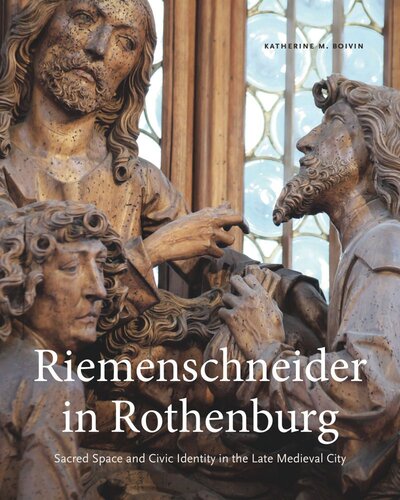

Most ebook files are in PDF format, so you can easily read them using various software such as Foxit Reader or directly on the Google Chrome browser.
Some ebook files are released by publishers in other formats such as .awz, .mobi, .epub, .fb2, etc. You may need to install specific software to read these formats on mobile/PC, such as Calibre.
Please read the tutorial at this link: https://ebookbell.com/faq
We offer FREE conversion to the popular formats you request; however, this may take some time. Therefore, right after payment, please email us, and we will try to provide the service as quickly as possible.
For some exceptional file formats or broken links (if any), please refrain from opening any disputes. Instead, email us first, and we will try to assist within a maximum of 6 hours.
EbookBell Team

5.0
40 reviewsThe concept of the medieval city is fixed in the modern imagination, conjuring visions of fortified walls, towering churches, and winding streets. In Riemenschneider in Rothenburg, Katherine M. Boivininvestigates how medieval urban planning and artistic programming worked together to form dynamic environments, demonstrating the agency of objects, styles, and spaces in mapping the late medieval city.
Using altarpieces by the famed medieval artist Tilman Riemenschneider as touchstones for her argument, Boivin explores how artwork in Germany’s preeminent medieval city, Rothenburg ob der Tauber, deliberately propagated civic ideals. She argues that the numerous artistic pieces commissioned by the city’s elected council over the course of two centuries built upon one another, creating a cohesive structural network that attracted religious pilgrims and furthered the theological ideals of the parish church. By contextualizing some of Rothenburg’s most significant architectural and artistic works, such as St. James’s Church and Riemenschneider’s Altarpiece of the Holy Blood, Boivin shows how the city government employed these works to establish a local aesthetic that awed visitors, raising Rothenburg’s profile and putting it on the pilgrimage map of Europe.
Carefully documented and convincingly argued, this book sheds important new light on the history of one of Germany’s major tourist destinations. It will be of considerable interest to medieval art historians and scholars working in the fields of cultural and urban history.